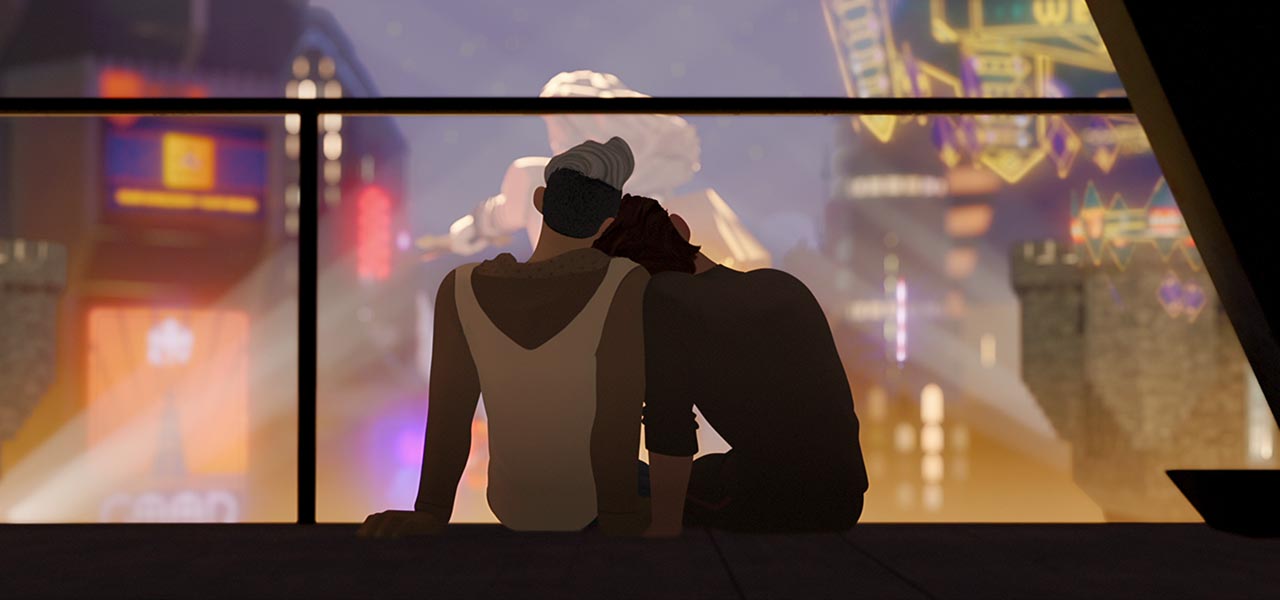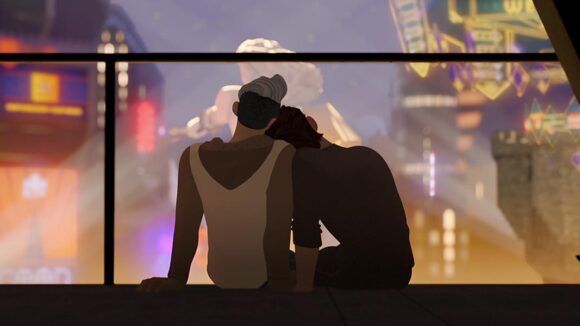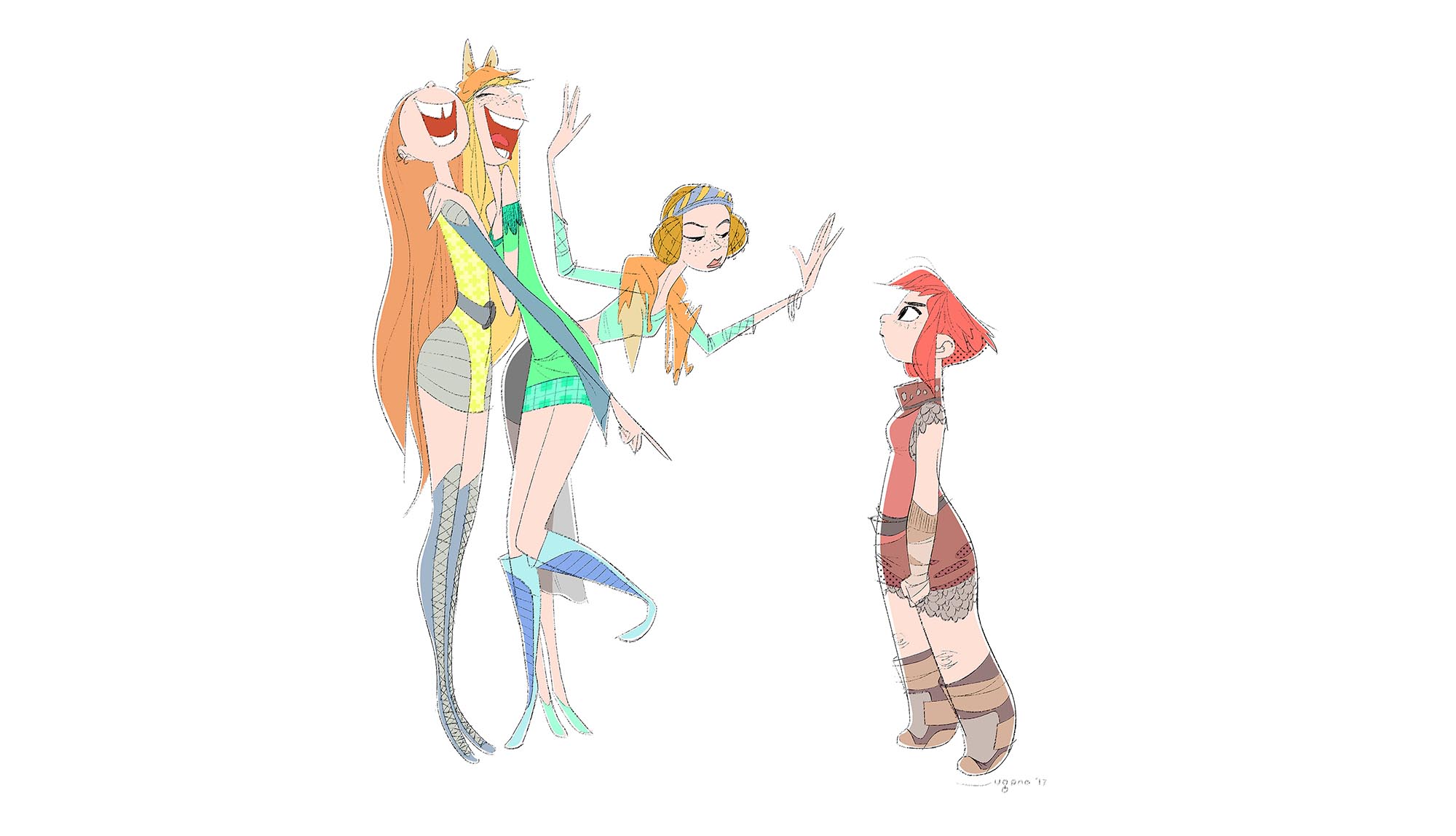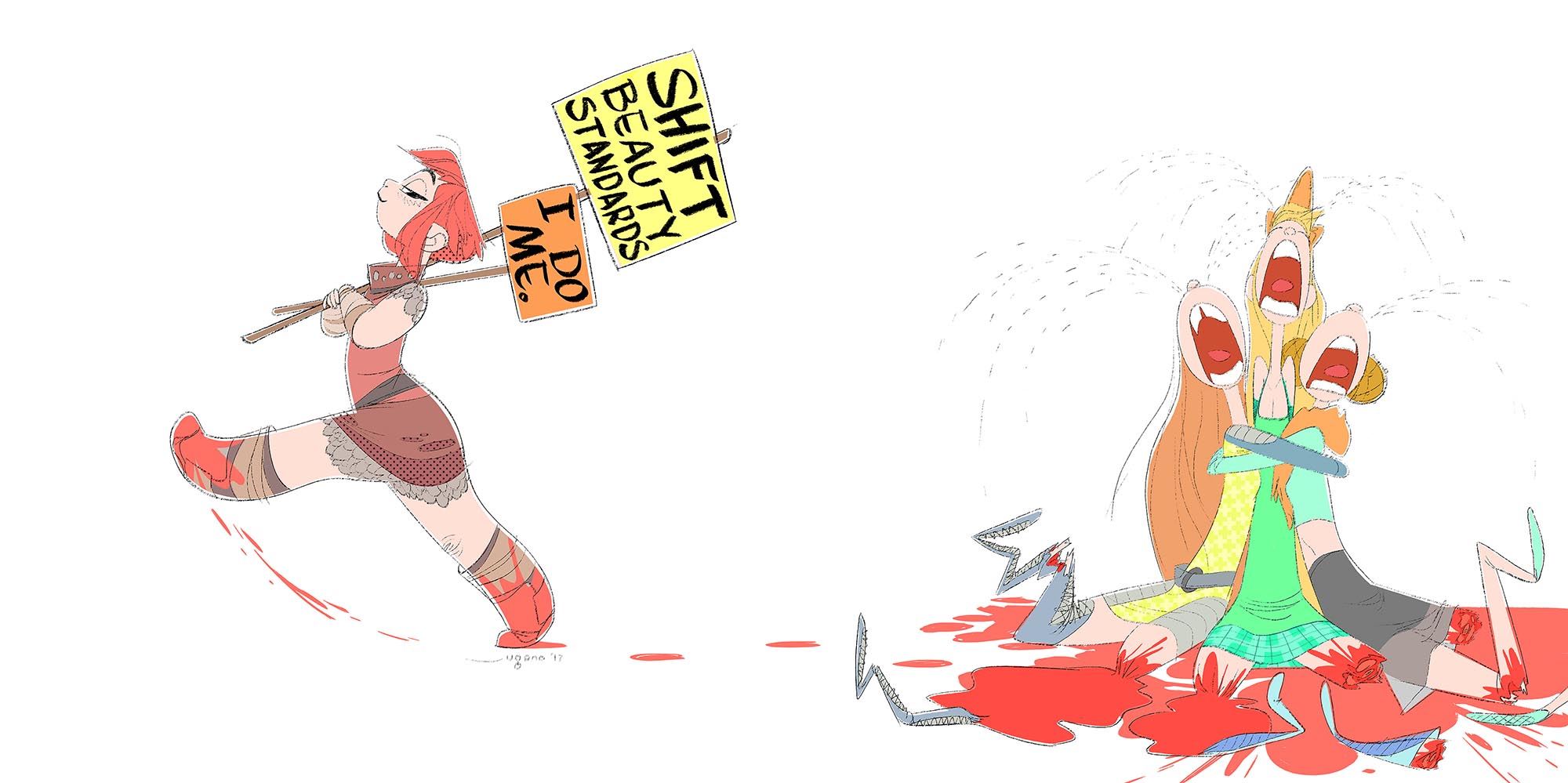

How Netflix And Annapurna Resurrected One Of The Most Courageous Animated Films Of All Time, ‘Nimona’ (Exclusive Video)
Cartoon Brew and Netflix recently teamed up to host a special FYC screening of Nimona in Los Angeles, followed by a conversation with the filmmakers including the creator of the NY Times best selling novel, ND Stevenson, directors Nick Bruno and Troy Quane, and production designer Aidan Sugano where they spoke candidly about the film’s obstacle-laden journey from the fights to stay true to the LGBTQ+ storytelling, to the closure of Blue Sky Studios, to finding a new home with Megan Ellison at Annapurna, and to finally reaching a global audience on Netflix.
The film, newly nominated for a Critics Choice Award, is available to stream on Netflix, and the Q&A is available below to Cartoon Brew readers.
Nimona debuted on Netflix on June 30 where it was in Netflix’s Top 10 for four weeks following the film’s electric premiere at the Annecy Film Festival where it received an eighteen-minute, emotional standing ovation and became an instant hit with critics and audiences alike. Based on Stevenson’s graphic novel of the same name, Nimona unspools in a techno-medieval universe and tells the story of a knight named Ballister who is framed for a tragic crime and teams up with the shapeshifting titular teenager to prove his innocence. However, his new sidekick is more comfortable playing the role of a villain.
According to Stevenson, it was a dream come true when he learned someone wanted to make a movie from his graphic novel which eventually became celebrated by the LGBTQ+ community as a trans allegory and part of his own journey of self-discovery.
“When you have a project like this, that’s so personal – it came from somewhere so close to my heart – it’s every creator’s dream to see it move on and have this life outside of what you did,” he explained. “But that’s also really scary. It was kind of an exercise in how to let go and hold it with an open hand.”
When telling the story of Nimona, one cannot omit the film’s tumultuous production, which spanned seven years and three studios. Summed up briefly, Nimona was well into production at Blue Sky Studios when Disney bought the studio’s parent company, Fox Entertainment, in 2019. Disney eventually shuttered Blue Sky, canceling production of the film. Annapurna Pictures then acquired Nimona and teamed with Netflix to revive the project, recruiting DNEG to animate.
Anyone familiar with Stevenson’s original webcomic will know that Nimona is an unapologetically LGBTQ+-friendly story. (Out magazine just named Nimona the Best Queer Film of 2023.)
According to Bruno, from the beginning, the film’s crew shared that same unapologetic allyship. However, when Nimona became a Disney project, the filmmakers ran into studio executives who were equally as unapologetic that they needed to remove some of the “gay stuff” from the movie.
“These are adults running a corporation that essentially controls our world,” Bruno told the audience during this week’s screening. “It was disheartening. We’re representing people who we love at our studio and beyond. We all have someone that we care so much about that has a connection to this theme, and they’re telling us to not do it.”
Despite fears of losing their jobs or having their film get dropped by Disney, Bruno, and Quane said they were unwilling to consent to the studio’s requests. Bruno remembers that “in a very scared, pee your pants sort of way, we said, ‘We’re not gonna take that out,’ because I couldn’t go back after that meeting and look anybody in the eye and say, ‘I support you,’ if I couldn’t do it to two old people at the top of Disney.”
Disney shutting down Blue Sky was devastating, said Quane, but ultimately, it resulted in the Nimona that audiences have fallen in love with today.
“As hard as it was when Disney shut the studio down, and we saw 500 of our closest friends and family displaced and spread across the industry, in a way, it was what allowed the movie to become unapologetically what it was,” he explained. “We found a lot of support. We were allowed to bring those themes forward and swing for the fences as hard as we could.”
Support, said Bruno, came from Annapurna founder Megan Ellison and later from producers at Netflix. “Megan Ellison picked it up and said, ‘What do you want to do?’ because she felt this was the movie that she needed when she was a kid,” he recalled. “Then Netflix picked us up, and they were super supportive as well.”
With Annapurna and Netflix on board, Nimona was revived with the spirit of a cool indie feature and the financial backing of a major Hollywood studio.
One way the film feels completely different from most animated Hollywood fare is in the physical manifestation of its female lead.
Although Stevenson admitted it was a bit scary to let someone else take the lead with the Nimona character, he appreciated that the film’s crew always kept him in the loop to ensure fidelity with the source material.
“They really brought me into the process, and it became a conversation,” he said. “Her body type was really important to me, her look, her punkiness, her gender non-conforming. The way she presents herself says so much about who she is as a character… Everything else you could change, but at the heart of it was her. Otherwise, why adapt it?
Quane said it was a joy to feature a female lead who didn’t conform to cookie-cutter standards that have dominated the industry for years.
“The expectation of an animated film is you have a certain type of female lead, and she has to be affirmational,” he said. “But we’re all messy individuals and have good days and bad days. It was important that we saw that spectrum [with Nimona]. Animation, in general, comes with the expectation of a medium. People call it a genre, and so when you’re making an animated film, it’s supposed to be a certain thing. We didn’t view it that way. An animated film should be whatever story you need to tell. Whatever the characters need to say.”
Aidan Sugano, who was with the film from day one at Blue Sky, explained, “We went through so many design iterations on her character while needing to remain true to the icon that ND created. Everyone on the floor knew who this character needed to be from day one. It was a challenge every step of the way… But at some point, she was the one who started making the decisions for herself. As a designer, that became very easy.”


What resulted, in the end, was a film that presents as its filmmakers set out to create it, free from studio notes, as an unapologetically queer story celebrating those that society tries to shut out. Directors Bruno and Quane have said that Nimona “at its heart is a story of acceptance. A movie about being seen for who you truly are and a love letter to all those who’ve ever shared that universal feeling of being misunderstood or like an outsider trying to fit in.” The hope is to change lives and “help others find their own acceptance in the world.”
